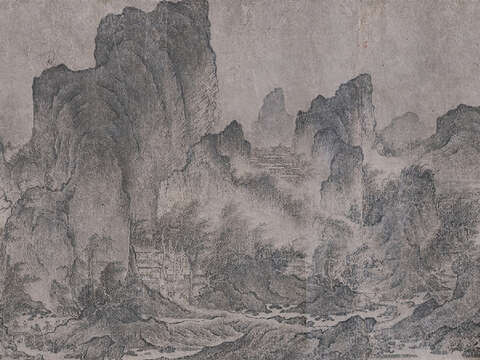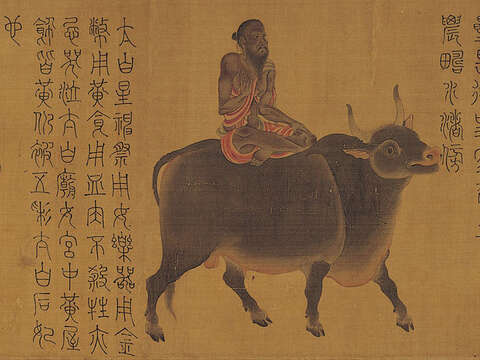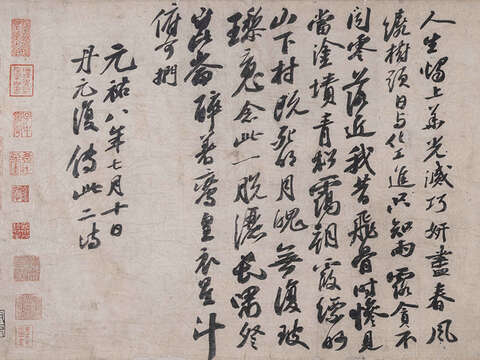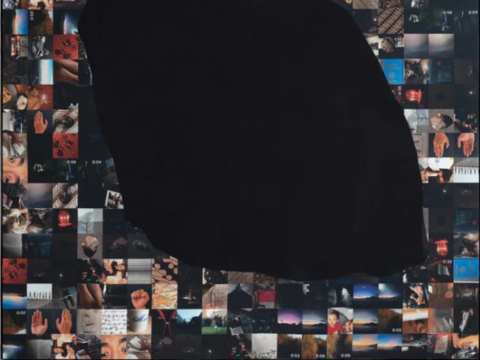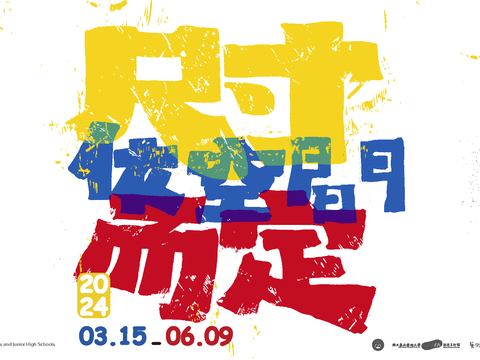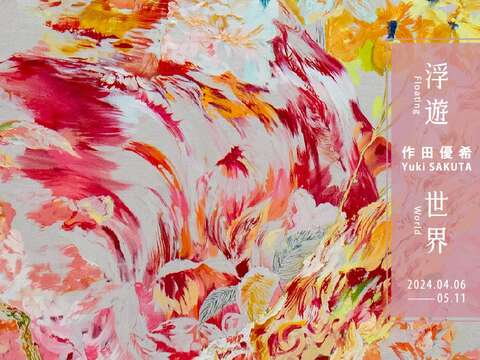Post date:2021-08-31
Updates:2021-08-31
993
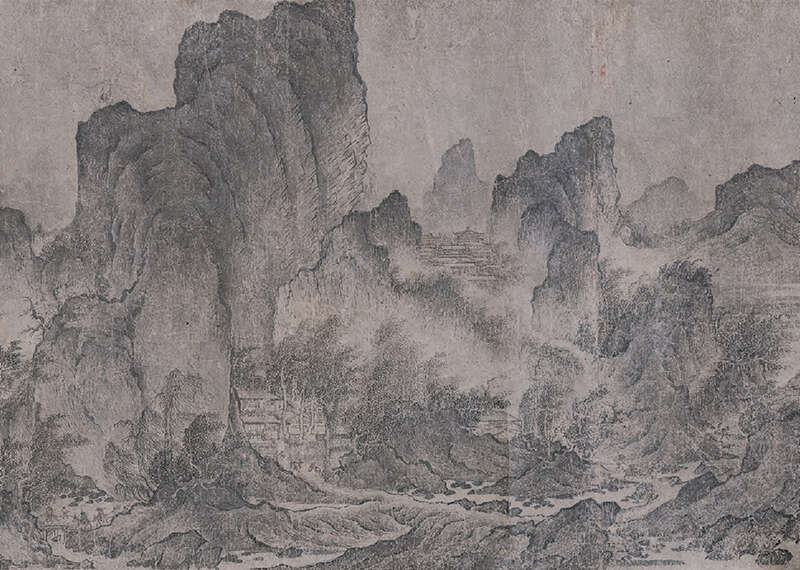
- Event Time
- 2021-07-24~2021-09-21
- Event Location
- No.221, Sec. 2, Zhishan Rd, Shilin Dist., Taipei City Taiwan, R.O.C
Dates: 2021-07-24~2021-09-21
Gallery: (Northern Branch) Exhibition Area I 202,204,206,208,210,212
The Chinese idiom "lament for a hidden gem" is well known to many, but who has actually seen such a gem? The collection of Chinese painting and calligraphy at the Osaka City Museum of Fine Arts in Japan features numerous masterpieces over the dynasties, and some of them would even be considered by major museums around the world as missing pieces to their collections. Thus, many of these museums might actually "lament" not having these "hidden gems" that are on display in this exhibition.
The works of Chinese painting and calligraphy in this loan exhibition trace back to the former Sōraikan collection of Fusajirō Abe (1868-1937) that his son Kōjirō Abe (1897-1990) donated to the Osaka City Museum of Fine Arts in 1943. Fusajirō Abe at the time had come under the influence of the famous Sinologists Naitō Konan (1866-1934) and Uzan Nagao (1864-1942) in the Kansai region and actively sought to purchase fine painting and calligraphy from China and in Japan, resulting in the acquisition of such famous works as Zhang Sengyou’s (479-?) "The Five Planets and Twenty-eight Constellations," Wu Daoxuan's (?-792) "The Heavenly King Sees Off His Son," Li Cheng (916-967) and Wang Xiao's (fl. mid-10th c.) "Reading the Memorial Stele," Yan Wengui's (fl. latter half of the 10th-first half of the 11th c.) "Pavilions Among Mountains and Rivers," Yi Yuanji's (fl. latter half of the 11th c.) "Gathering of Gibbons," Mi Youren's (1074-1151) "Distant Peaks, Clearing Clouds," Gong Kai's (1222-?) "Emaciated Horse," and Zheng Sixiao's (1241-1318) "Ink Orchid." Many of these had once been in the imperial collection of the Qing dynasty, and some are even the only surviving examples of their kind. For the National Palace Museum, its collection deriving mainly from the holdings of the Qing court, this exhibition offers a rare and exceptional opportunity to temporarily fill lacunae in presenting the history of Chinese art. In addition, these loan works from Japan reflect the unique insights into the connoisseurship of Chinese painting and calligraphy within the cultural circles at that time and place. In preparing for this loan, the National Palace Museum has also carefully selected specific related works from its own collection to display together with these masterpieces from Osaka, thereby highlighting the extraordinary holdings of both institutions and a history of Chinese painting and calligraphy in general.
This is not only the first large-scale loan of Chinese painting and calligraphy for exhibit at the National Palace Museum, it also represents the first time that the Osaka City Museum of Fine Arts is displaying masterpieces from its collection in Taiwan. It is anticipated that the exhibit will receive the attention of both scholars and general audiences alike and therefore achieve the museum's dual result of public education and scholarly research. Finally, the interactions between the two museums in Taipei and Osaka for this loan exhibition have established a fine mechanism for cooperation that hopefully will continue and encourage further cultural exchanges between Taiwan and Japan in the future.
Gallery: (Northern Branch) Exhibition Area I 202,204,206,208,210,212
The Chinese idiom "lament for a hidden gem" is well known to many, but who has actually seen such a gem? The collection of Chinese painting and calligraphy at the Osaka City Museum of Fine Arts in Japan features numerous masterpieces over the dynasties, and some of them would even be considered by major museums around the world as missing pieces to their collections. Thus, many of these museums might actually "lament" not having these "hidden gems" that are on display in this exhibition.
The works of Chinese painting and calligraphy in this loan exhibition trace back to the former Sōraikan collection of Fusajirō Abe (1868-1937) that his son Kōjirō Abe (1897-1990) donated to the Osaka City Museum of Fine Arts in 1943. Fusajirō Abe at the time had come under the influence of the famous Sinologists Naitō Konan (1866-1934) and Uzan Nagao (1864-1942) in the Kansai region and actively sought to purchase fine painting and calligraphy from China and in Japan, resulting in the acquisition of such famous works as Zhang Sengyou’s (479-?) "The Five Planets and Twenty-eight Constellations," Wu Daoxuan's (?-792) "The Heavenly King Sees Off His Son," Li Cheng (916-967) and Wang Xiao's (fl. mid-10th c.) "Reading the Memorial Stele," Yan Wengui's (fl. latter half of the 10th-first half of the 11th c.) "Pavilions Among Mountains and Rivers," Yi Yuanji's (fl. latter half of the 11th c.) "Gathering of Gibbons," Mi Youren's (1074-1151) "Distant Peaks, Clearing Clouds," Gong Kai's (1222-?) "Emaciated Horse," and Zheng Sixiao's (1241-1318) "Ink Orchid." Many of these had once been in the imperial collection of the Qing dynasty, and some are even the only surviving examples of their kind. For the National Palace Museum, its collection deriving mainly from the holdings of the Qing court, this exhibition offers a rare and exceptional opportunity to temporarily fill lacunae in presenting the history of Chinese art. In addition, these loan works from Japan reflect the unique insights into the connoisseurship of Chinese painting and calligraphy within the cultural circles at that time and place. In preparing for this loan, the National Palace Museum has also carefully selected specific related works from its own collection to display together with these masterpieces from Osaka, thereby highlighting the extraordinary holdings of both institutions and a history of Chinese painting and calligraphy in general.
This is not only the first large-scale loan of Chinese painting and calligraphy for exhibit at the National Palace Museum, it also represents the first time that the Osaka City Museum of Fine Arts is displaying masterpieces from its collection in Taiwan. It is anticipated that the exhibit will receive the attention of both scholars and general audiences alike and therefore achieve the museum's dual result of public education and scholarly research. Finally, the interactions between the two museums in Taipei and Osaka for this loan exhibition have established a fine mechanism for cooperation that hopefully will continue and encourage further cultural exchanges between Taiwan and Japan in the future.
 Hidden Gems: Treasures of Painting and Calligraphy from the Osaka City Museum of Fine Arts
Hidden Gems: Treasures of Painting and Calligraphy from the Osaka City Museum of Fine Arts